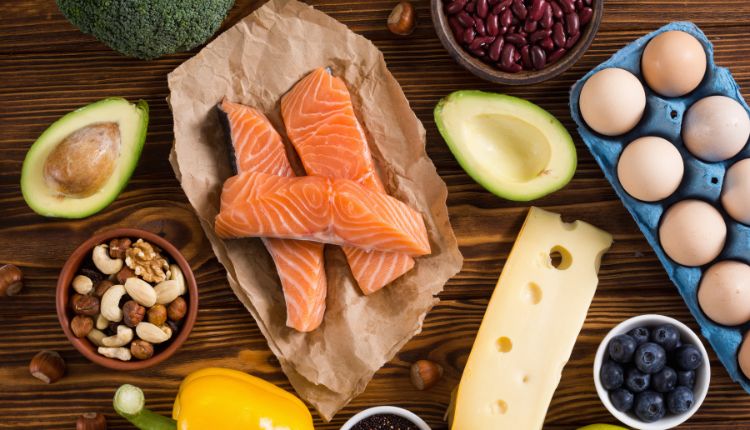Top 10 Foods for Patients Following a Low Bacteria Diet
Medical facilities are full of germs, posing a risk to those most susceptible to infections. Patients staying at the hospital or left compromised at home might follow a low-bacteria diet to protect themselves. But what is a low-bacteria diet, and what foods are considered low microbial?
What Is a Low Microbial Diet and Why Should Patients Follow One?
Some foods are riddled with bacteria, either from their transport or from people and the environment — of course, consuming these products can make you sick. A low microbial diet entails selecting, preparing and cooking foods and drinks with lower bacteria levels, preventing infections and having a lesser negative impact on the gut.
Health care professionals aim to protect immunocompromised patients in hospital settings. Often, they conduct adenosine triphosphate (ATP) tests that measure water purification in 20 seconds — this helps them look for signs of microbes or other contaminants. They may also require patients to eat a low-bacteria diet for a weakened immune system.
For example, people undergoing chemotherapy or who’ve just had an organ transplant must take special precautions to prevent illness — developing neutropenia is a concern for cancer patients.
What Can You Eat on a Low Microbial Diet: 10 Foods
So, you’ve decided to follow a low-bacteria diet. Now you must figure out what you can and cannot eat. A low-microbial diet is relatively straightforward and the top 10 low-bacteria foods are likely items you already enjoy.
Well-Done Protein
How do you like your steak cooked? If you’ve always said medium or medium-rare, you’ve put yourself at risk of developing an infection.
Eating raw or undercooked meat can make you sick — for instance, raw chicken contains Campylobacter, causing diarrhea and vomiting. Other meats could have Salmonella, E. coli or other harmful bacteria. A low-bacteria diet requires careful cleaning and ensuring your protein is well done.
Pasteurized Dairy
You can enjoy milk and dairy products on a low microbial diet as long as they undergo pasteurization. Pasteurized dairy has been sterilized at high temperatures in short durations, destroying bacteria without compromising taste and nutrition.
Examples of pasteurized dairy include milk, yogurt, commercial cheese and ice cream. Yes, you can savor the sweetness of ice cream on a low-bacterial diet.
Fruits and Vegetables
Fresh produce is an essential component of a healthy eating plan — however, raw, unwashed vegetables and fruits can contain Salmonella, Listeria and E. coli — a leading cause of foodborne illnesses. Consuming cooked and well-washed produce is essential when following a low-microbial diet.
Wash your hands first when handling produce. It would be best to consider using a scrubber brush underwater, regardless of whether you plan to eat the peel. Additionally, keep fruits and vegetables away from raw meat and refrigerate them as soon as possible. Storing your produce in the refrigerator keeps them fresh and makes them last longer.
Dried Herbs
Herbs and spices give any dish great flavor yet can be a source of significant bacteria. Herbs become contaminated from toxins and heavy metals in the soil during harvesting or cross-contamination during processing.
Dehydrated herbs have a much lower microbial count than fresh herbs and are just as tasty. Studies have shown that cloves and oregano have the fewest foodborne pathogens of all herbs.
Sourdough Bread
Although a low microbial diet allows patients to eat any bread, few are as good for you as sourdough. Sourdough is made by leaving flour and water to ferment for days.
The yeast and bacteria eventually cause the bread to rise, producing acids and a sour flavor the longer it sits. Of course, the acids are good, killing off any harmful bacteria that can make you sick.
Salt
Too much sodium isn’t necessarily healthy for you — excess salt could cause cardiovascular disease, high blood pressure and kidney dysfunction — but adding a little salt for flavor is perfectly fine for a low-bacteria diet.
Various cultures have long used salt as a preservative for seafood, animal protein and dairy — this is because salt stunts microbial growth and encourages healthy acid bacteria to form. In high concentrations, salt can hinder starter cultures from forming in meats.
Cooking Oil
Prior research has shown that cooking oils can inhibit bacterial growth of Salmonella and E. coli on surfaces by 1,000 times, especially pots and skillets. Kitchens that use oils during food preparation or cleaning are much safer for patients on low microbial diets.
Oils fill cracks and crevices and prevent and trap microorganisms. They can also be good for you. For example, olive oil has antifungal and antibacterial properties — it also helps lower cholesterol levels, reduces free radicals and contains essential beta-carotene and vitamins for healthy bodies.
Purified Water
Water is critical to our survival, but it’s essential only to drink water that’s undergone extensive testing for parasites, bacteria and other harmful viruses. You should always boil well water and add a water purifier to your faucet for tap filtration.
Although you can ensure bottled water is likely safe, you should still choose a reliable brand like Aquafina, Dasani, Nestle and Poland Spring. Always confirm the company’s process includes distilling or reverse osmosis.
Packaged Herbal Teas
Teas have well-known health benefits but can be risky on a low-bacteria diet. If you enjoy a cup of hot tea to wind down in the evenings, make sure you brew a cup using packaged tea bags. Tea bags help reduce exposure to bacteria and microbes, ensuring your cup of tea is contaminant-free.
Green tea leaves, in particular, have high catechin levels, boosting their antimicrobial activity in the body. If you do feel adverse bacterial effects in the body, drinking green tea may ease your symptoms.
Commercial Desserts
Those with a sweet tooth should stick to commercial pastries, cakes and other sweets. Commercial desserts are hygienically prepared to ensure minimal contamination at the processing plant. They’re then packaged and sealed for ultimate freshness and protection.
Of course, always eat desserts in moderation. An excess of sugary foods can cause diabetes and have adverse health effects overall.
Protect the Body With a Low-Bacteria Diet
Food can have medicinal benefits, but patients must always be wary of potential bacteria. That’s why a low-microbial diet is better for your health and protects you from infection.



Comments are closed.